
Disclaimer: This blog entry wasn’t written until seven years after the trip. It should be noted that this was a huge mistake. Sometimes after writing so much about other days, it happens that at the time directly after the trip or even during, I convince myself that the details are not that important. Years later, these details are that important, and pulling them out of foggy memories is difficult. The photos help and often leave clues, and then Caroline’s memories are usually far clearer than mine. With that said, here goes.
Today was the day that we headed out of Frankfurt for a spontaneous, much-needed road trip that would take us someplace else. Up the road from Fulda is Eisenach, which at one time had been part of East Germany; as Caroline nor I had ever been there, it seemed like a great starting point. Like all road trips, we do our best to get out early, and this one was no exception. An hour down the road it was time for breakfast, and so we grabbed some random cafe. Wempen Backhaus am Dalberg in Fulda was the perfect place. This breakfast came to define a memory of perfection that’s never been far from our minds. While we’d already been in Germany 18 days by now, this breakfast extravaganza struck a chord that is resonating seven years later as I write this.

On intervening vacations in Europe, we’ve not made it back to Fulda, but the place will hopefully draw us back for a return at least once more in our lifetimes. We didn’t need much convincing that if the rest of our meal was so amazing that their creampuffs would probably be delectable too, we weren’t wrong. I should point out that Backhaus am Dalberg is not in a high-end shopping area, a wealthy neighborhood, or is in any way set up to tease our expectations with its exclusiveness. It was a cafe and did its work incredibly. While relatively common across Germany, these levels of attention to detail are rare in America unless you are in Santa Monica, California, Bellevue, Washington, New York City, or out on Cape Cod.
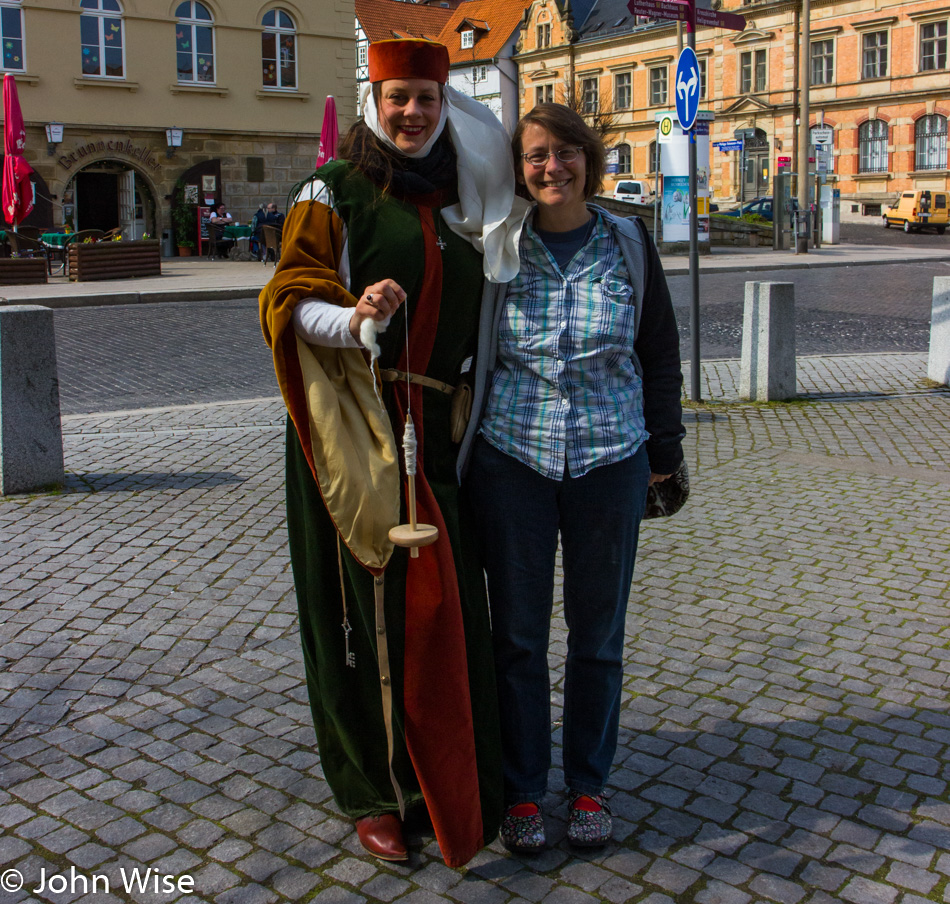
Once arrived in Eisenach, we had just barely parked the car when we spotted a woman in garb from another age, and can we believe our eyes? She’s spinning fiber! While Caroline’s sister Stephanie is an avid knitter, she doesn’t spin or weave, so this is the first German my wife has ever met who knows how to spin fiber to make yarn. That deserved a photo to mark the occasion.

St. George’s Church on the Marktplatz is known in German as Georgenkirche and was originally built in the 12th century. Martin Luther held a sermon right here back on 2 May 1521, and 165 years later on 23 March 1685, Johann Sebastian Bach was baptized in this very church.
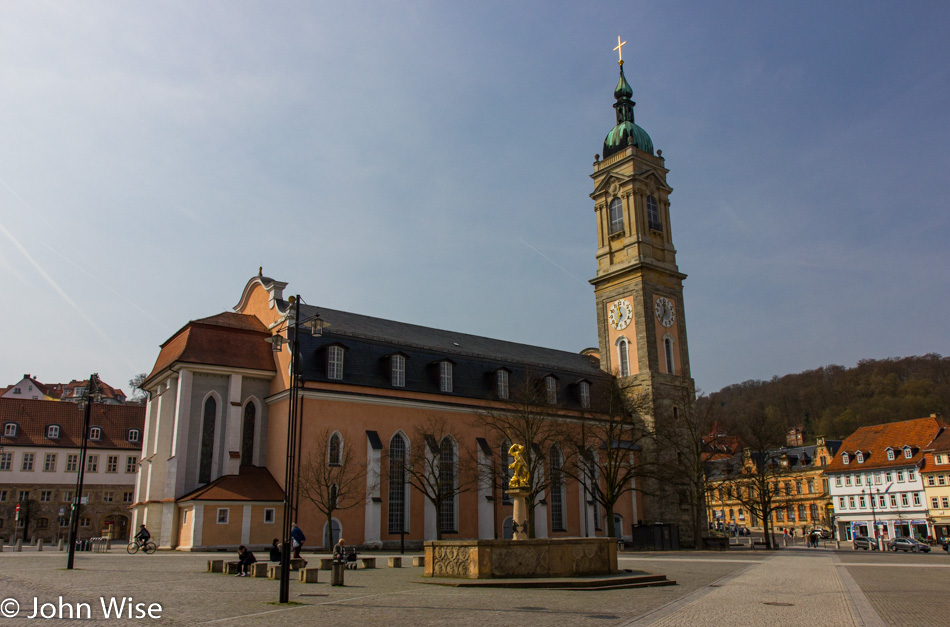
Both of these events played key roles in why we are in Eisenach today. Around the corner is a Bach Museum, and just a few miles up the road from there is the Wartburg, where Martin Luther made history. Seeing we aren’t in a hurry today and plan on being out on the road for four days, we are taking our time to wander a bit. By the way, that fountain here on the side of the church was designed back in 1549.

On our way over to Bachhaus (Bach House), I couldn’t help but want to photograph every Fachwerkhaus I spotted. In America, we refer to this style of architecture as a half-timbered house.

Outside the Bach House, where a court area features this statue, we were trying to go slow and contain our excitement, but come on, this is Bach, and in some way, it is like visiting Disneyland for nerds. At one point, it was thought this was where Johann Sebastian Bach was born, but proof of that has never been found, so while it could be proven that he lived here for a time, that will suffice for it to act as the museum that highlights his life here in Eisenach during the period of the late 17th century into the early 18th.

Just minutes after paying our admission, we were told to hurry over to a nearby room where a demonstration of some of Bach’s music would be performed on historic instruments that would have been identical to those available to the composer in his day. How does one explain how amazing it is to hear the music of Bach on instruments that he may have actually played almost 300 years ago? The exhibits are much of what one would expect when visiting a home setup to give impressions of the age, but other than the actual historical pieces; it was the music shop after the performance that really had our attention. I think we left with between 8 and 10 CDs of Bach’s music.

After that kind of excitement, Caroline needed something to calm her geek factor down, and nothing does that, like a nice lukewarm bottle of Black Ass beer. Oh, you don’t read German and can’t translate Schwarzer Esel? Well, I just did that for you, and the photo is proof that my wife guzzled a bottle of Black Ass on the streets of Eisenach. I think Martin Luther might have rolled over in his grave at my description of these shenanigans in this important city.

We drove up the hill a bit and parked in the forest with everyone else. The vendor selling Thüringer Rostbratwurst almost pulled us in for the grilling sausages, but he had a good line going, and we were hoofing it up the mountain, so we’d wait till later for a snack. There’s something not so great about our approach in the forest: we never were able to gain an overview of the castle we were approaching. This is the Wartburg, and like a broken record, I can’t downplay the historical importance of this fortress on the mountaintop. The Wartburg served as the hiding place for Martin Luther from May 1521 to March 1522 and is where, over a 10-week period, he translated the bible from Greek to German.

Martin Luther was hiding here after receiving ex-communication from Pope Leo X and not recanting during the Diet of Worms his Ninety-five Theses or Disputation on the Power and Efficacy of Indulgences, where he took umbrage with the abuse of power by the clergy. Now a wanted man, it was Frederick the Wise who helped “Junker Jörg” (aka the Knight George) remain in hiding. By the way, Frederick and I are in no way related as far as I know, and obviously, Knight George was the nom de guerre of Martin Luther.

Nearly 500 years ago, Martin Luther, who may have very well stood at this window contemplating his act of rebellion while being clueless that Lutheranism and Protestantism were about to be birthed and the entire balance of power in Europe and the church were going to shift. Within 100 years of this fateful translation, Europe would fall into World War Zero with the 30 Years War.

Before arriving at the room where Martin Luther worked, we had to pass through a number of rooms in the castle. Normally, this would be very cool, but we’re talking about the guy behind the Reformation, so quite a serious heavyweight in the scheme of history. This is kind of like waiting in line to get on the Pirates of the Caribbean. Yes, it’s quite nice here, but I want to get into the cellar where the drunken pirates are putting on quite the scene.
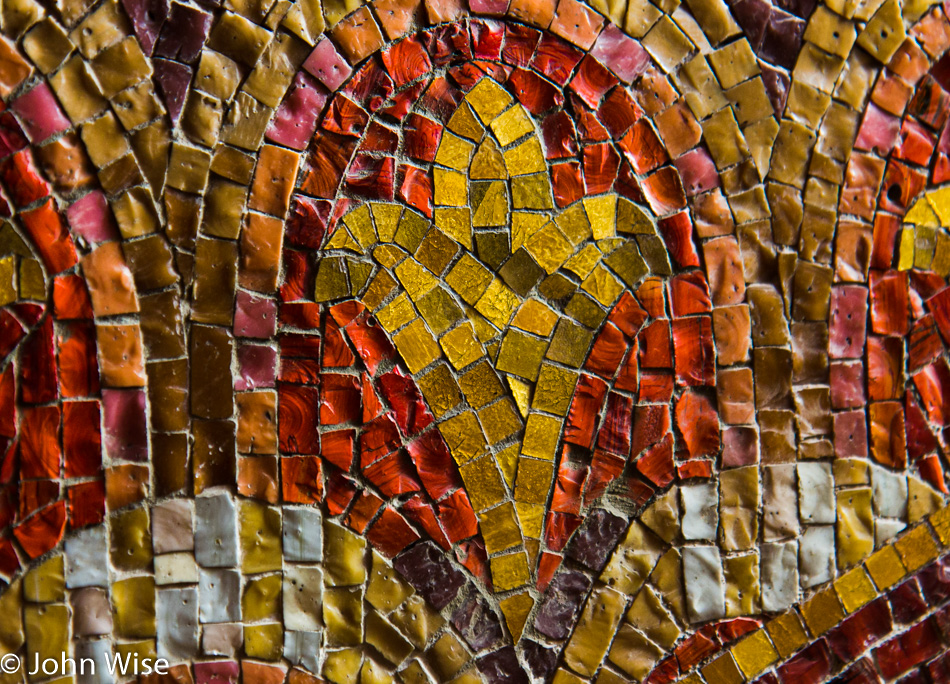
About now, I’d imagine my average reader who showed up here for a travel story is wondering what the hell the Ninety-Five Theses and Reformation have to do with getting Thüringer sausages and hanging out at a castle. Maybe you are asking if there’s a corollary between bratwursts and the bible; while I’m sure there is, I don’t really know what it would be off-hand, but there’s certainly a correlation regarding massive shifts in European history and then American history for that matter when it came to the events between 1517 and early 1522. We’re talking a lot of facts and details that no one comes to my blog for; you’d probably prefer I get to those grilled sausages and tell you how yummy they were.

This is the Festaal or the Banquet Hall, where the royalty of Thüringia would gather to feast on Thüringer Brats and beer. The truth is I don’t know exactly, though I wonder if this was where Devo played back on June 13, 1980, when this was still Communist East Germany?
Update: it’s been a few years since I wrote this, and the Wikipedia article still claims that Devo played here, but with further research, I learned that Devo actually played the Wartburg in Wiesbaden, West Germany, just outside of Frankfurt.

One more bit of history for you: the Wartburg is the setting for Richard Wagner’s opera Tannhäuser. Legend has it that the Sängerkrieg, or Minstrels’ Contest, was performed here back in 1206 to 1207, which Wagner based his opera on. Now, don’t forget to post a comment here after you go have a listen to Tannhäuser and thank me, though I really enjoy Tristan and Isolde a lot too. Also, consider that back in 1618 to 1648, the 30 Years War was going on, and while this castle was still standing, it was doing poorly but not as bad as the population below when, between 1347 and 1351, the Black Plague was decimating Europe. Did I forget to tell you that Goethe once stayed here? He was considering turning the Wartburg into an art museum, but when 100s of students met here in 1817 to proclaim their desire for a national state with a constitution and laying the groundwork for the 1848 revolution, he lost interest.

This is the room, it is claimed, where Martin Luther translated the bible and changed history forever. If I have my history right, the wall over by the heater is where Martin Luther saw the devil and threw his inkpot at him. The resulting stain remained through much of history, but slowly but surely, souvenir hunters scraped a gaping hole in the wall as they tried collecting their personal mementos. No matter the specifics, we are in proximity to the locations where momentous events were taking place, and so if we do nothing more than reflect on these tidbits of history we’ve collected over our lifetimes, we can relish the opportunity afforded us to round out the pictures that drift out of space creating knowledge for those interested in collecting it.

Weimar, the place of legend. Sadly, we are here late in the day and will basically just pass through. As this is a spontaneous road trip without known destinations and our desire to shove as many sights into our heads as possible before returning to America in 9 days, we will stay on the move with the hope that our little orientation side trips while in Europe will lead to a return to pick up on those sights we miss due to our relative hurry.

For over 1000 years, the city of Weimar has been here and is probably most famous for lending its name to post-World War I Germany – the Weimar Republic. Germany’s first democratic constitution was signed here, thus creating the first German republic.
Also very important, Weimar’s contribution to the German Enlightenment started back in the 18th century. People like Johann Gottfried Herder, who was an early leader in the Sturm and Drang movement, along with Friedrich Schiller and Johann Wolfgang von Goethe, defined Weimar Classicism. After World War I, Walter Gropius, who founded the Bauhaus movement along with Paul Klee and Wassily Kandinsky, gave Weimar its artistic roots.

We are taking it easy on our trek through town but needed to visit a green area and this summer home of Goethe on the Ilm River seemed like a nice destination.

Or maybe our real goal was to find Caroline a place to step into the water so she could take the tradition we started in America into Europe?

The actual graves of Goethe and Schiller are over in the Fürstengruft, which is the ducal burial chapel, but that is now closed for the day. This Goethe family memorial had to represent our visit to the cemetery.
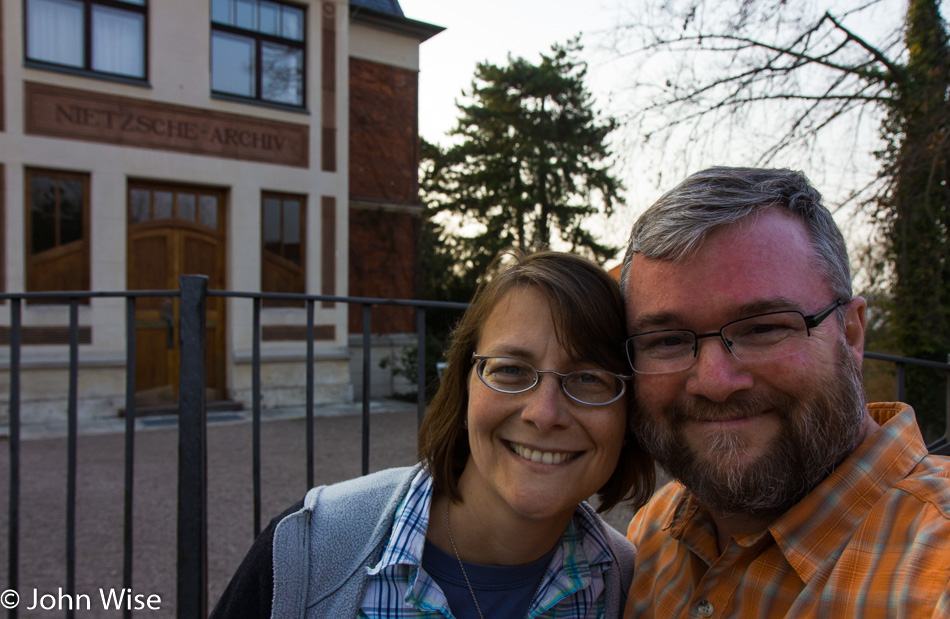
All this talk about history and we now get to my personal high point; though being able to visit would have been better, at least we had the chance to stand in front of the Nietzsche Archive. This is where Friedrich Nietzsche spent the last silent years of his life. He was not originally from Weimar, but his sister had a home here, right behind us, and in his years of mental collapse, it was the place where he would be cared for. While Nietzsche has played quite an important role in my life, I can never say with any certainty that I understood a word he wrote. Even the titles of his works are buried with meaning that may have escaped my puny brain. No matter, I still have the utmost respect for his brand of genius and am content that I’ve had the opportunity to be somewhere near where he once was.

So here we are with so many important moments and personalities out of history, but our last monument is one that few people outside of Germany have likely heard of this is the Wildenbruch Monument. Ernst von Wildenbruch was a poet and dramatist. I can’t say I’ve ever heard of even one of his works, but seeing this statue memorializing him in the late-day sun, I couldn’t help but feel he was worthy of making a contribution to this blog.
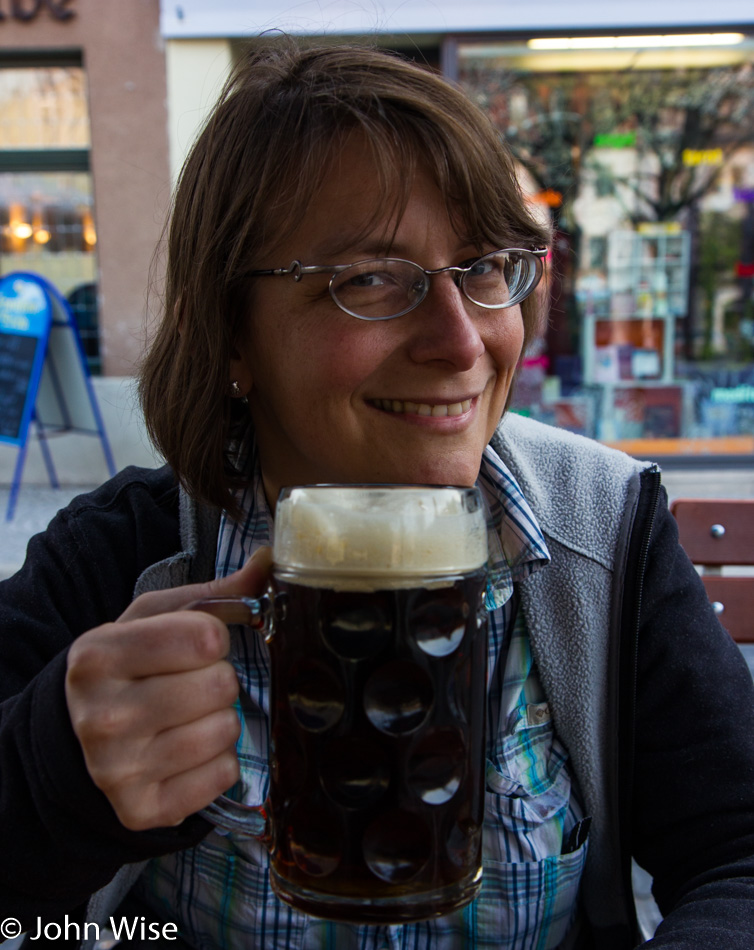
We’ll stay the night at the Hotel Röhrsdorfer Hof over in Chemnitz but first some dinner in Weimar. It was a beautiful day here in late April, and what’s better than enjoying a beer while sitting outside to enjoy the remaining sunset? It’s funny how, after seven years away from this experience, the flow of photos combined with the exercise of writing along with Caroline and my memories allowed me to put together a not-so-short narrative about the day. On to Dresden.
One Reply to “Eisenach to Weimar, Germany”